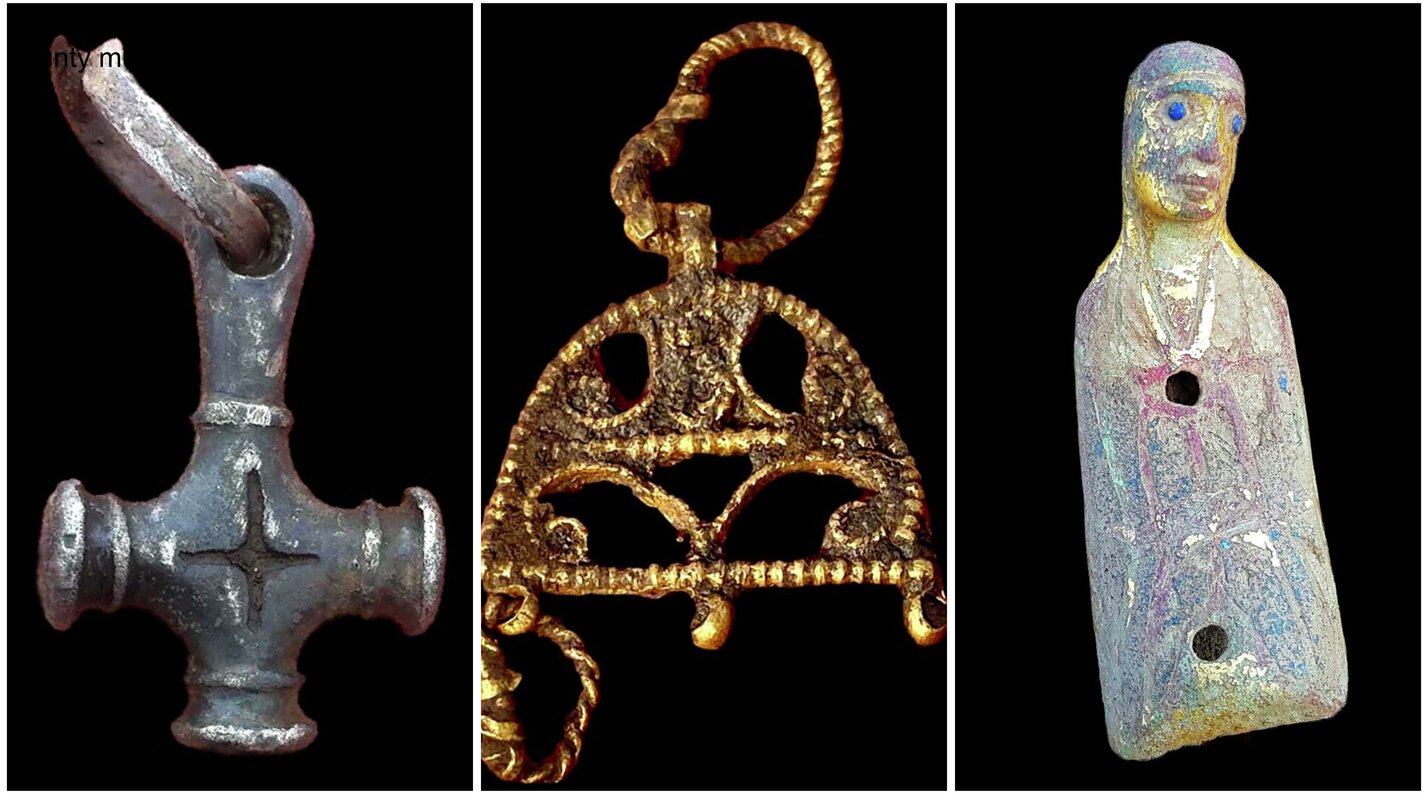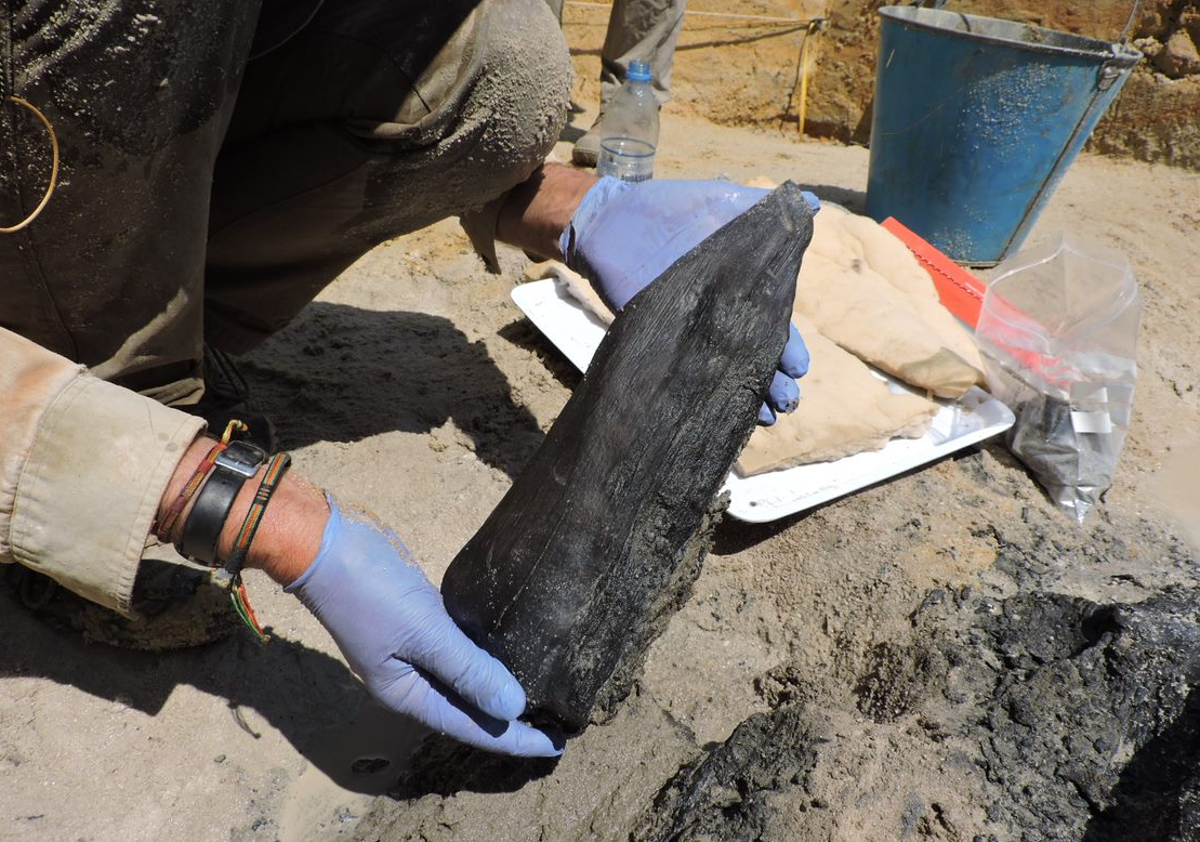Archaeology
If you are an anthropologist or just someone who loves archaeology we are currently looking for mods to help grow c/archaeology! Please comment below if you are interested.
 phys.org
phys.org
A psychological phenomenon where people see meaningful forms in random patterns, such as seeing faces in clouds, may have stimulated early humans to make cave art.
 phys.org
phys.org
An excavation in Turkey has brought to light an unknown Indo-European language. Professor Daniel Schwemer, an expert for the ancient Near East, is involved in investigating the discovery.
YORK, ENGLAND—According to a statement released by the University of York, a new analysis of collagen extracted from Viking hair combs by researchers from the University of York, University of Stockholm, the University of Barcelona, the Center for Baltic and Scandinavian Archaeology, and the Leibniz Center for Archaeology suggests trade between the Viking settlement of Hedeby in Germany and northern Scandinavia may have originated earlier than previously thought. Large amounts of craft production waste, mostly comprised of red deer antler, has been recovered at Hedeby, a major antler-working center. But the study found that 85 to 90 percent of the finished antler combs unearthed in Hedeby had been made from the antlers of reindeer, which live in northern Scandinavia. The study therefore indicates that the combs unearthed at Hedeby had been manufactured elsewhere and then transported on a large scale as early as A.D. 800. Read the original scholarly article about this research in Antiquity.
LIVERPOOL, ENGLAND—The Guardian reports that remains of a wooden structure built by hominins has been discovered near Zambia’s Kalambo Falls by a team of researchers led by Larry Barham of the University of Liverpool. The materials have been dated to least 476,000 years ago by team members from the University of Aberystwyth with luminescence dating techniques, which reveal the last time minerals in the sands surrounding the artifacts had been exposed to sunlight. The remains of the structure include two logs bearing cutting, chopping, and scraping marks made with stone tools also found at the site. The end of one log crosses the second and is held in place with a large notch. “When I first saw it, I thought this can’t be real,” Barham said. He thinks the structure may have been part of a walkway or a foundation for a platform. “A platform could be used as a place to store things, to keep firewood or food dry, or it might have been a place to sit and make things. You could put a little shelter on top and sleep there,” he explained. The dating of the structure indicates it could have been made by Homo heidelbergensis, a hominin that lived in the region at the time. During their investigation of the Kalambo Falls area, Barham and his colleagues also recovered a wooden wedge, a split branch with a notch in it that may have been part of a trap, and a log that had been cut at both ends.
WILLIAMSBURG, VIRGINIA—Colonial Williamsburg archaeologists have determined that the remains of 21 or 22 men found in a historic area of the city belong to Confederate soldiers, according to a report in the Daily Press. The men likely died in a Union-operated hospital established after the Battle of Williamsburg on May 5, 1862, which claimed the lives of 1,682 Confederate soldiers and 2,283 Union soldiers. The men’s remains will eventually be reburied, along with the artifacts found with them, including a snuff bottle, toothbrush, buttons, and gold coins. “I’m really happy we’re able to work toward identifying these guys (and) then provide some level to dignity” in their reburial, said Jack Gary, Colonial Williamsburg Foundation’s director of archaeology who is leading the recovery project.
When the Romantic poet’s younger brother John died at sea, marine artefacts helped him bear the loss, research reveals When William Wordsworth’s beloved younger brother John died on a ship that sank in rough seas off the coast of Dorset in 1805, the great Romantic poet dealt with his sorrow by writing of the “calamitous” loss: “Sea, Ship, drown’d, Shipwreck – so it came/The meek, the brave, the good, was gone;/ He who had been our living John/ Was nothing but a name.” John was captain of the East India Company’s largest ship, the Earl of Abergavenny, which sank after hitting rocks shortly after embarking on a trading voyage to China. He was among more than 250 crew and passengers who perished on a bitterly cold February night.
 www.theguardian.com
www.theguardian.com
Experts say loss of 1,500 items reveals lax cataloguing and boosts case for returning objects to countries of origin Close observers of the antiquities market tend to be a cynical bunch, having witnessed any number of scams, dubious practices and illicit trading. Yet there was a collective expression of shock among them last week when news emerged of the unexplained absence of a reported around 2,000 items from the British Museum’s priceless collection of ancient and historical artefacts, leading to the resignation of director Hartwig Fischer. “The volume of missing objects is huge,” says Christos Tsirogiannis, a forensic archaeologist who works with Trafficking Culture, which researches global traffic in looted cultural objects. “No experts were expecting this to happen in one of the world’s biggest museums.”
 phys.org
phys.org
At the end of the Middle Stone Age and during the Late Stone Age, settlements in the West Estonian lowlands were more seasonal than in the neighboring areas of the island of Saaremaa and the Pärnu Bay catchment area, indicates the study conducted by Kristjan Sander who defended his doctoral thesis at Tallinn University's School of Humanities. The doctoral thesis examines the period of approximately 5300-2600 BC. The time frame of the thesis begins with the end of the maximum water level of one of the development stages of the Baltic Sea following the Last Glacial Period—the Littorina Sea—since which the sea level in Estonia has been continuously falling. To this day, post-glacial rebound is particularly fast in West and North-West Estonia, and the ancient coastlines are now located as far as up to 30 km inland in certain locations. In many places, millennia-old beach formations are still visible in nature today. In the two geographical areas examined, Kristjan Sander searched for settlements of Stone Age people on the land freed from under the sea as a result of post-glacial rebound and on inland riverbanks up to 10 km from the coastline of the Littorina Sea at its maximum water level. One of the areas studied is situated in North-West Estonia, embracing the peninsulas bordering the sea bay that lay there in the place of the present-day Suursoo, and, further northwest, the Elbiku mountain that was once an island located up to 15 km from the coast. Fieldwork took place in the villages of Kõmmaste, Risti, Vilivalla, Vihterpalu, Variku, and Nõmmemaa. The second examined area is situated on the beach of Ancient Matsalu Bay on the Üdruma—Teenuse—Vana-Vigala—Avaste route and on the southern edge of Matsalu National Park where the current highlands (Kirbla, Lautna, Kloostri, Hälvati, Lihula, Massu, and Salevere) formed an archipelago resembling today's Väinameri Sea. New settlements were searched for by collecting finds on open land, i.e. plowed fields, allotments, road verges, firebreaks, forest roads, and clearings. Kristjan Sander's doctoral thesis fills a big gap in studying Stone Age in Estonia as prior to Sander's exploration only four settlements and one burial site were known in Western Estonian lowlands. During fieldwork, 102 settlements (at least 3 finds) and 39 incidental discovery sites were mapped. Surprisingly, no settlements were identified that could, based on the material found and dimensions established, be considered more permanent in nature as are known settlements in the neighboring Pärnu Bay catchment area and the island of Saaremaa. Regarding the studied period, solely seasonal land use in large areas like the ones in question is a new discovery on the entire eastern shore of the Baltic Sea, although individual seasonal settlements have also been described earlier. Stone Age settlements in Western Estonia expanded on different terrains at different times. The oldest settlements of the Middle Stone Age are located at river estuaries and ancient coastal lagoons as well as at the tips of peninsulas. At the end of the Middle Stone Age at the latest, starting from the Narva stage (5200-3900 BC), small islands were also made use of. At the beginning of the New Stone Age, in the Comb Ware stage (approx. 3900–1800 BC), additional settlements were built on the riverbanks near the coast. Based on ethnographic analogies, Sander hypothesizes that the observed settlement dynamics are caused by the intensification of fishing in response to the slow cooling of the climate. It can be assumed then that the seasonal settlement situated in the southern area examined originated from Saaremaa island as inhabitants of the Pärnu Bay catchment area already had an abundance of large rivers rich in fish. Assembling such a broader picture of settlements provides an insight into the ways of life and society of the distant past that cannot be replaced by excavation of individual settlements. However, archaeological excavations are indeed required to investigate the activities that took place in the newly identified settlements.
In a biological preserve in Mexico’s Campeche State, a team of archaeologists has documented pyramids, palaces, a ball court and other remains of an ancient city they call Ocomtún. Armed with machetes and chain-saws, hacking through fallen trees and wading through dense scrub, the archaeologists cleared a path down rocky trails. At last, they reached their destination in Mexico’s Yucatán Peninsula: a hidden city where pyramids and palaces rose above crowds over 1,000 years ago, with a ball court and terraces now buried and overgrown. Mexico’s National Institute of Anthropology and History hailed their work late last month, saying they had discovered an ancient Maya city in “a vast area practically unknown to archaeology.” “These stories about ‘lost cities in the jungle’ — very often these things are quite minor or being spun by journalists,” said Simon Martin, a political anthropologist who was not involved in the work. “But this is much closer to the real deal.”
Archaeology
!archaeology@lemmy.worldA community devoted to sharing information and discussion of all things related to archaeology.
Rules:
- Be kind.
- No spam or soliciting for money.
- No racism or other bigotry allowed.
- Obviously nothing illegal.
If you see these please report them.




